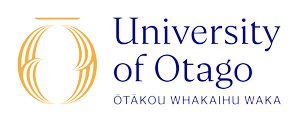Rural Students Press Release
Rural students face educational barriers to medical training
Lucy Mason, Hana Turner-Adams, Garry Nixon & Kyle Eggleton (2023) Rural secondary school leaver attainment inequities for students entering medical programmes in Aotearoa New Zealand, Journal of the Royal Society of New Zealand,DOI: 10.1080/03036758.2023.2258072
2023-10-12Press release:
Rural students face educational barriers to medical training
Students applying to enter medical programmes in Aotearoa New Zealand, after attending rural and regional schools, are disadvantaged by lower exam marks at those schools.
A new study, published in the Journal of the Royal Society of New Zealand, compared NCEA and UE attainment rates across secondary schools from 2012 to 2021, finding rural high schools have lower pass rates and marks than urban ones.
“The lower UE attainment levels for rural schools means it is likely that rural students will have greater difficulty in entering medical programmes and this inequity is worse for rural Māori students,” says lead author Dr Kyle Eggleton, Associate Dean Rural at
Waipapa Taumata Rau, University of Auckland.
Rural schools are more likely to be in socioeconomically deprived areas, have a greater proportion of Māori students and be poorly resourced compared with urban schools.
Māori students attending schools which had a Māori world view, such as kura kaupapa and Māori boarding schools had higher pass rates than those attending mainstream schools.
The authors emphasised the study’s findings were based on aggregate data, and did not necessarily reflect the experiences of all rural students. However, the research provides evidence of a systemic problem.
The findings are relevant to the Otago and Auckland medical schools’ rural and regional admission schemes, which currently earmark a number of places for rural and regional students.
The admission schemes have been established among many measures aimed at addressing a rural medical workforce crisis in New Zealand. Medical students from rural backgrounds are more likely to return and work rurally.
“The study’s findings have important implications for the future of medical education in Aotearoa New Zealand,” Dr Eggleton says.
Recommendations from the research include:
- Rural entry pathways need to have an equity focus, so students have additional support once entering medical programmes.
- Rural Māori students should be targeted in Māori admission pathways and additional support given to address educational disadvantage.
- There should be pre-programme preparatory courses and interventions in rural high schools.
- Importantly, rural high schools should have increased funding and resources.
“It is clear that more needs to be done to address the educational attainment inequities faced by rural students, particularly rural Māori students,” Dr Eggleton says.
“This will require a fundamental shift in the way that medical programmes are designed and delivered, with a focus on equity as well as workforce needs,” he says.
Waipapa Taumata Rau, University of Auckland
ABSTRACT
The education literature suggests that there are rural–urban differences in educational achievement. Lower educational achievement in rural schools may impact entry into highly competitive medical programmes and disadvantage rural students. Within this study, the National Certificate of Educational Achievement (NCEA) and University Entrance (UE) attainment rates are compared across Aotearoa New Zealand secondary schools for 2012–2021. High schools were classified as urban or rural according to the two rural admission schemes used in the medical programmes at the University of Otago and the University of Auckland. Descriptive statistics were calculated and regression models created to adjust for a range of variables. The data demonstrates that rural high schools have lower NCEA and UE attainment. Lower Māori student NCEA and UE attainment, greater socioeconomic disadvantage and differing characteristics account for the majority of differences between rural and urban schools. The lower UE attainment rate for rural schools will likely mean that rural students will have greater difficulty in entering medical programmes and that this inequity is worse for rural Māori students. Medical programme admission pathways need to undergo a fundamental shift–from workforce pathways to workforce and equity pathways in order to address rural workforce issues.
2ND PRESS RELEASE Rural students face bigger climb to enter university | RNZ News
Well Done Kyle!
